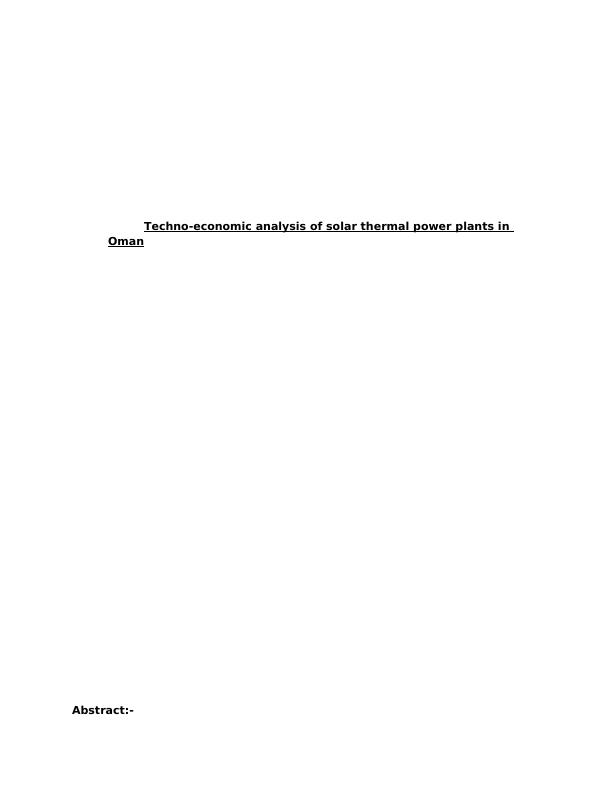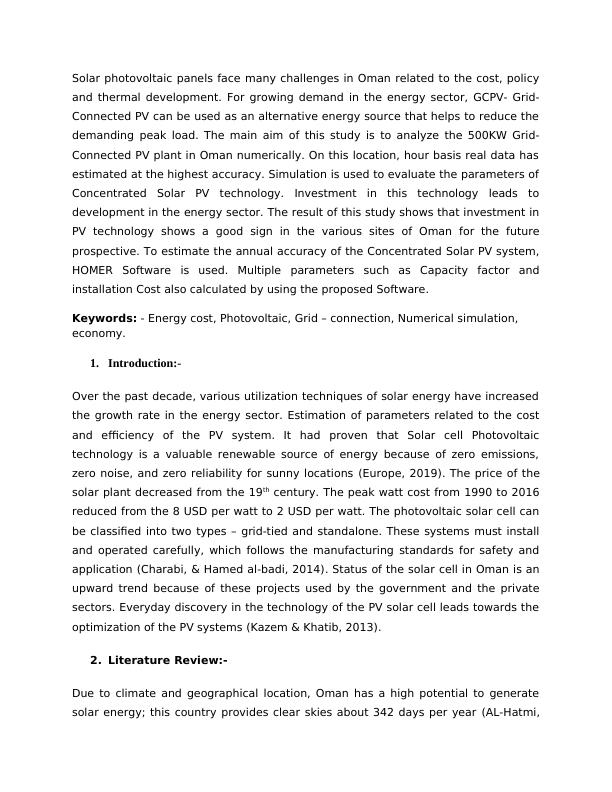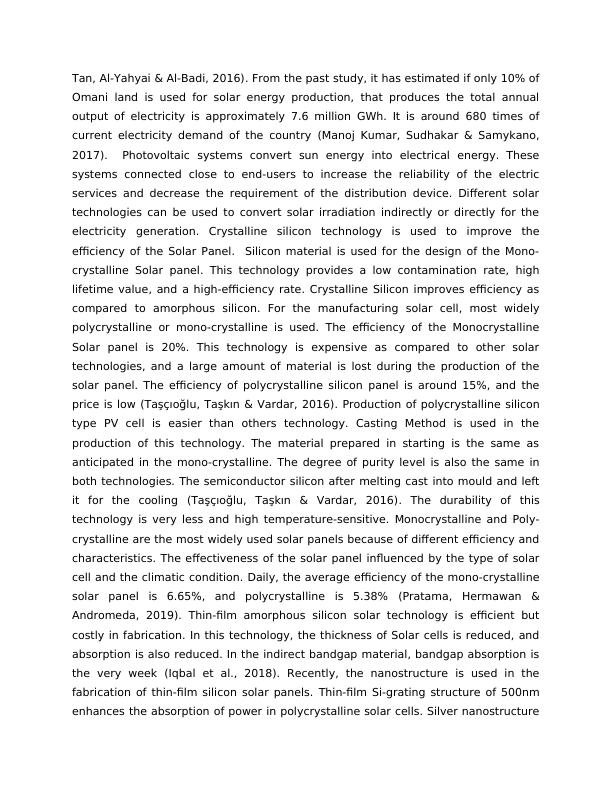Techno-Economic Analysis Of Solar Thermal Power Plants
Literature review on the different types of solar thermal power plants, their advantages and disadvantages, and their potential for supplying electricity to remote areas in Oman. The thesis will focus on comparing the price of electricity from these plants and providing recommendations for Oman's energy sector.
14 Pages3059 Words10 Views
Added on 2022-08-15
Techno-Economic Analysis Of Solar Thermal Power Plants
Literature review on the different types of solar thermal power plants, their advantages and disadvantages, and their potential for supplying electricity to remote areas in Oman. The thesis will focus on comparing the price of electricity from these plants and providing recommendations for Oman's energy sector.
Added on 2022-08-15
ShareRelated Documents
End of preview
Want to access all the pages? Upload your documents or become a member.
Techno-Economic Analysis Of Solar Thermal Power Plants In Oman
|12
|3022
|10
conventional photovoltaics systems Assignment PDF
|18
|3480
|361
(PDF) Solar Energy and Photovoltaic Systems
|44
|10933
|150
Study & Analysis of 5KWP Grid Connected Solar Photovoltaic Power Plant
|19
|4357
|257
Photovoltaic Solar Power System Assignment 2022
|21
|3747
|135
Automatic Solar Tracking System: Working Mechanism and Components
|12
|3553
|326




